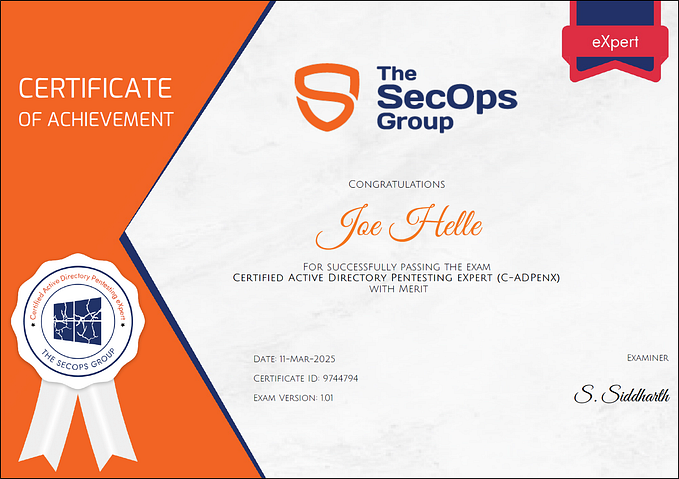HackTheBox “Remote” Walkthrough
Remote, an easy-level Windows OS machine on HackTheBox, the journey unfolds with the hunt for a crucial hash hidden within a config file accessible via NFS. Cracking this hash becomes the key to unlocking the vulnerabilities within an Umbraco CMS system. Venturing further, the discovery of a TeamView Server running reveals a treasure trove of credentials tucked away in the registry. Extracting and decrypting these bytes unveils the coveted administrator user’s credentials, paving the way for establishing a shell via Evil-WinRM.

Let’s get started! 🚀
Recon & Enumeration
Let’s use nmap to full scan for open ports and services:
┌──(kali㉿kali)-[~/Downloads]
└─$ sudo nmap -T4 -A -p- 10.10.10.180
Starting Nmap 7.94SVN ( https://nmap.org ) at 2024-02-09 15:05 EST
Warning: 10.10.10.180 giving up on port because retransmission cap hit (6).
Nmap scan report for 10.10.10.180
Host is up (0.11s latency).
Not shown: 65464 closed tcp ports (reset), 55 filtered tcp ports (no-response)
PORT STATE SERVICE VERSION
21/tcp open ftp Microsoft ftpd
| ftp-syst:
|_ SYST: Windows_NT
|_ftp-anon: Anonymous FTP login allowed (FTP code 230)
80/tcp open http
|_http-title: Home - Acme Widgets
111/tcp open rpcbind 2-4 (RPC #100000)
| rpcinfo:
| program version port/proto service
| 100000 2,3,4 111/tcp rpcbind
| 100000 2,3,4 111/tcp6 rpcbind
| 100000 2,3,4 111/udp rpcbind
| 100000 2,3,4 111/udp6 rpcbind
| 100003 2,3 2049/udp nfs
| 100003 2,3 2049/udp6 nfs
| 100003 2,3,4 2049/tcp nfs
| 100003 2,3,4 2049/tcp6 nfs
| 100005 1,2,3 2049/tcp mountd
| 100005 1,2,3 2049/tcp6 mountd
| 100005 1,2,3 2049/udp mountd
| 100005 1,2,3 2049/udp6 mountd
| 100021 1,2,3,4 2049/tcp nlockmgr
| 100021 1,2,3,4 2049/tcp6 nlockmgr
| 100021 1,2,3,4 2049/udp nlockmgr
| 100021 1,2,3,4 2049/udp6 nlockmgr
| 100024 1 2049/tcp status
| 100024 1 2049/tcp6 status
| 100024 1 2049/udp status
|_ 100024 1 2049/udp6 status
135/tcp open msrpc Microsoft Windows RPC
139/tcp open netbios-ssn Microsoft Windows netbios-ssn
445/tcp open microsoft-ds?
2049/tcp open nlockmgr 1-4 (RPC #100021)
5985/tcp open http Microsoft HTTPAPI httpd 2.0 (SSDP/UPnP)
|_http-server-header: Microsoft-HTTPAPI/2.0
|_http-title: Not Found
47001/tcp open http Microsoft HTTPAPI httpd 2.0 (SSDP/UPnP)
|_http-server-header: Microsoft-HTTPAPI/2.0
|_http-title: Not Found
49664/tcp open msrpc Microsoft Windows RPC
49665/tcp open unknown
49666/tcp open msrpc Microsoft Windows RPC
49667/tcp open unknown
49678/tcp open unknown
49679/tcp open msrpc Microsoft Windows RPC
49680/tcp open unknown
No exact OS matches for host (If you know what OS is running on it, see https://nmap.org/submit/ ).
TCP/IP fingerprint:
OS:SCAN(V=7.94SVN%E=4%D=2/9%OT=21%CT=1%CU=37111%PV=Y%DS=2%DC=T%G=Y%TM=65C68
OS:DAD%P=x86_64-pc-linux-gnu)SEQ(TI=I%CI=RD%TS=U)SEQ(SP=106%GCD=1%ISR=108%T
OS:I=I%CI=RD%TS=U)SEQ(SP=108%GCD=1%ISR=109%TI=RD%CI=I%TS=U)SEQ(SP=109%GCD=1
OS:%ISR=109%TI=I%CI=I%TS=U)SEQ(SP=109%GCD=1%ISR=109%TI=I%CI=RD%TS=U)OPS(O1=
OS:M53CNW8NNS%O2=M53CNW8NNS%O3=M53CNW8%O4=M53CNW8NNS%O5=M53CNW8NNS%O6=M53CN
OS:NS)WIN(W1=FFFF%W2=FFFF%W3=FFFF%W4=FFFF%W5=FFFF%W6=FF70)ECN(R=Y%DF=Y%T=80
OS:%W=FFFF%O=M53CNW8NNS%CC=Y%Q=)T1(R=Y%DF=Y%T=80%S=O%A=O%F=AS%RD=0%Q=)T1(R=
OS:Y%DF=Y%T=80%S=O%A=S+%F=AS%RD=0%Q=)T2(R=Y%DF=Y%T=80%W=0%S=Z%A=S%F=AR%O=%R
OS:D=0%Q=)T3(R=Y%DF=Y%T=80%W=0%S=Z%A=O%F=AR%O=%RD=0%Q=)T4(R=Y%DF=Y%T=80%W=0
OS:%S=A%A=O%F=R%O=%RD=0%Q=)T5(R=Y%DF=Y%T=80%W=0%S=Z%A=S+%F=AR%O=%RD=0%Q=)T6
OS:(R=Y%DF=Y%T=80%W=0%S=A%A=O%F=R%O=%RD=0%Q=)T7(R=Y%DF=Y%T=80%W=0%S=Z%A=S+%
OS:F=AR%O=%RD=0%Q=)U1(R=N)U1(R=Y%DF=N%T=80%IPL=164%UN=0%RIPL=G%RID=G%RIPCK=
OS:G%RUCK=G%RUD=G)IE(R=Y%DFI=N%T=80%CD=Z)
Network Distance: 2 hops
Service Info: OS: Windows; CPE: cpe:/o:microsoft:windows
Host script results:
| smb2-time:
| date: 2024-02-09T21:39:00
|_ start_date: N/A
| smb2-security-mode:
| 3:1:1:
|_ Message signing enabled but not required
|_clock-skew: 59m59s
TRACEROUTE (using port 199/tcp)
HOP RTT ADDRESS
1 186.71 ms 10.10.14.1
2 187.59 ms 10.10.10.180
OS and Service detection performed. Please report any incorrect results at https://nmap.org/submit/ .
Nmap done: 1 IP address (1 host up) scanned in 2055.27 secondsLet’s have a look at port 80.

We inspect the webpage footer.

We discovered Umbraco in use, pinpointing the Administrator Login Panel at /Umbraco through documentation review.

Let’s check the NFS service using the showmount command.

Check out the App_Data directory.

We utilize strings for reading data from the .sdf file.

Let’s crack the admin password’s SHA1 hash with John The Ripper.

Based on the strings output, we’ve identified the admin email as admin@htb.local and obtained the password “baconandcheese”. Let’s try to login using them.

By searchsploiting Umbraco, it appears susceptible to Remote Command Execution.

We discovered a payload enabling arbitrary commands on the target machine.

We exploited the target machine by utilizing login credentials and specifying the desired command. Next, we leverage a Metasploit web delivery exploit to invoke a shell, tailoring the payload for the Windows machine.

Run.

We copy the payload and use it with the exploit script.

Let’s check our handler.

And we got a session on the target machine.

Privilege Escalation
Let’s scan the system for potential privilege escalation avenues.

We discovered TeamViewer 7 installed. Let’s search about it.

There’s a Metasploit script for post-exploitation that hunts for TeamViewer credentials.

We provided Evil-WinRM with the administrator username and password !R3m0te! along with the target IP Address.

And we got an admin shell.
Cheers.










